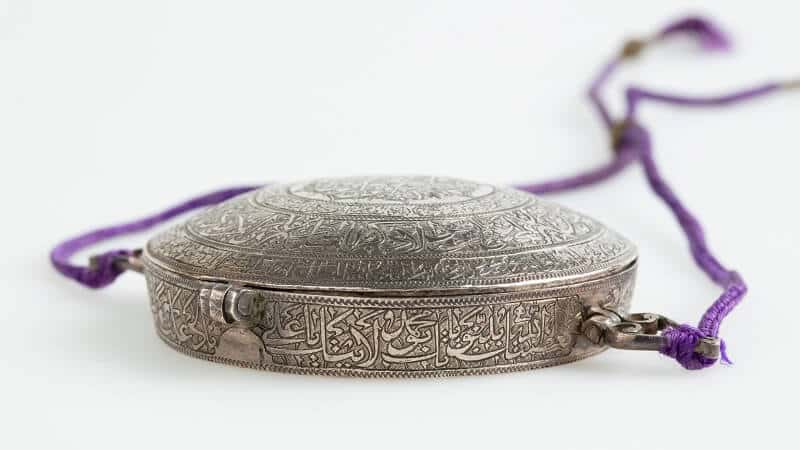The Powerhouse Museum brings the diverse social and cultural heritage of Persia to audiences in ‘Iranzamin’, a survey exhibition of Persian art. It showcases 100 rarely seen objects and artefacts alongside arts and crafts, drawn from the museum’s collection from the 1880s to now. ‘Iranzamin’ coincides with Nowrouz, Persian New Year celebrations.
Known today as (modern) Iran, Persia is one of the oldest inhabited places in the world dating back more than 100,000 years and is steeped in a rich and unique history of people, place and time. With a curatorial focus on the Qajar dynasty (1789-1925), the era when Persia was ruled by the Qajar royal family, ‘Iranzamin’ reflects on Persian society’s use of traditional arts and craft techniques in the making of objects and articles both practical and decorative used in all facets of daily life.

“Persia has a long tradition of arts and crafts stretching back more than a millennium, but it was under the reign of Naser al-Din Shah Qajar, King of Persia between 1848 and 1896, that Persian arts and crafts flourished. The Powerhouse’s Persian Collection, mostly from the Qajar era, is unique, rich and diverse. The objects tell fascinating stories about Iranian immigrants to Australia and cultural exchange between the two nations,” explains exhibition curator Pedram Khosronejad.
Stories from Persia are passed down in the materiality and intricate visual detail of hand-woven objects such as we see in the imagery in carpets and rugs, embroidery and textiles, and on the surfaces and in the designs of foundry produced items including weaponry and armour, metal-worked ornaments, ceramics, tiles, brass and glassware. Themes of joy and happiness, purification and cleansing, spirituality and devotion, poetry and calligraphy, ritual and performance, patronage and craftsmanship, nature and design, bring ancient tales to life.

Among the artefacts from the museum’s archives are an 18th century double-bladed Zulfiqar sword, a symbolic representation of the sword of the first Shiite Imam, Ali ibn-Abi Talib (as); a royal porcelain plate made for Naser al-Din Shah Qajar during his reign as the King of Persia; a rare Qajar fritware (clay pottery) wine pitcher decorated with motifs of lovers in a garden, and an equally rare nomadic rug (Qalicheh) from Bakhtiari tribes of south-west Iran.
The exhibition also looks at the influence that Persian arts and crafts has had on artists around the world exampled in the original wallpapers created by Australian painter and textile artist Florence Broadhurst (1899-1977). Inspired by Broadhurst’s travels to Iran, the series of decorative papers entitled Persian Phoenix (Simorgh), present the artist’s beautifully embellished designs, which incorporate birds, pomegranates and flowers unique to Persia’s natural environment and animal kingdom.

Iranzamin public programs
Until 3 April audiences can book into volunteer-led tours of the exhibition, as well as storytelling and insights about Nowrouz, Haftsin, the arrangement of seven items beginning with the letter ‘s’ on a table, a tradition which draws on the belief that seven is a lucky number.
The museum brings Persian new year festivities to a close with Sizdehbedar (Nature Day) celebrations on 3 April. Sizdehbedar is a national day of celebration in Persian culture, which pays homage to the wonders of Mother Nature. The holiday falls annually on the 13th day of Farvardin, the first month of the Iranian calendar.
Iranzamin Talk Series: From April through August audiences are invited to engage in a series of talks about Persian art and culture from exhibition curator Pedram Khosronejad, a socio-cultural and visual anthropologist of Iran; Dr Mahroo Moosavi, lecturer in architectural history and theory at the University of Sydney; and Dr Sam Bowker, Senior Lecturer in Art History and Visual Culture for Charles Sturt University.
Bookings are essential and seating is limited for some events, click here to explore the program.